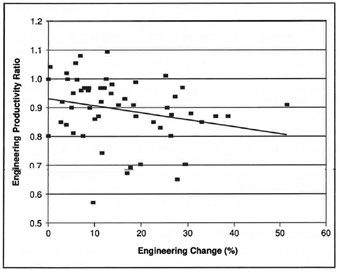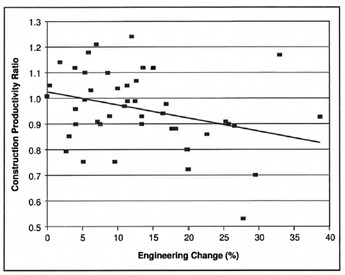In the construction industry, the unfortunate reality is that a substantial majority of projects fail to meet their cost and schedule objectives. Change, or more specifically the inability to manage change effectively, is a common reason for inconsistent project success. A robust change management process needs to start prior to project kickoff and follow throughout the lifecycle from design through construction.
A construction project may span several years from concept and completion. In that time, there are many opportunities for changes to be introduced into the project, such as:
- Scope (added, deleted or modified scopes of work)
- People (new project team members and stakeholders with different perspectives, methods and priorities)
- External factors (supply chain disruptions and material substitutions)
- Cost (changing market conditions and business rationale affecting the budget)
- Data (new information learned along the way that changes the project approach)
The reality is that experiencing change during a project is inevitable. While a well-planned project certainly increases the likelihood of success, it is not immune to the adverse impacts of unexpected changes. It is impossible to account for every what-if scenario. Therefore, successful projects utilize a framework for proactively managing changes. In this manner, they can identify changes, evaluate them, and then act upon them from an educated position, thereby providing both agility and control.
The impacts of uncontrolled changes have been studied and quantified. The Construction Industry Institute (CII) performed an analysis that yielded some fascinating results. Key takeaways are:
- “What appears to be a decline in productivity is actually work hours expended on unrecognized items of work.”
- “Many changes are characterized as “design development and ... are difficult to define.”
- “Projects cannot endure numerous changes that amount to a significant proportion of the original scope without suffering a significant decline in overall cost performance.”


The data support what seems intuitive; the more uncontrolled changes on the project, the worse the project’s cost performance. This is true both for changes impacting the design phases as well as the construction phases of a project, though the impact is much greater during the construction phase.
Construction, like many other disciplines, is a service industry and we often have clients who are under tremendous pressure. It is easy to want to accommodate every small request, especially during the design phase, when it may be an easy document update. Conflict is no fun, and people generally try to find ways to avoid it. How many times has a simple modification been accommodated because doing it is easier than pushing back? However, many times that small accommodation can backfire and lead to larger impacts because it wasn’t fully thought out or evaluated as a part of the larger effort. Or perhaps it’s part of a trend of a lot of small requests adding up. Either way, uncontrolled changes can derail a project.
So, what can be done to increase a project’s chance for success? It starts with developing a robust written project plan that clearly defines the starting point of scope and deliverables, as well as how changes are to be managed. The written plan gives a framework to the items that tend to derail projects. How do changes get identified? How do they get assessed? Who has the authority to approve or deny those changes? If the changes are approved, how are impacts on cost, scope, and schedule updated and communicated? These are all simple concepts in theory but are much more nuanced to manage when many people, personalities, and companies are involved. Having this structured process in place allows for decisions that add value to the project and are objectively fair to all parties.
Change is not a bad thing. On the contrary, changes can often be very good for a project as new information is learned and priorities shift, so long as they are well-coordinated and well-communicated.
Of course, the devil is always in the details, and not every project team effectively manages changes in a manner appropriate for its unique circumstances. That is why it is critical to work with an organization that is skilled at construction project execution and can ensure a robust change management process.
As the leading design-build firm in the industry, Haskell’s team of project professionals can guide your project to a successful outcome. Schedule a consultation to see what Haskell can do for you!
 About the author: Michael Asher is Director of Operations for Haskell’s Life Sciences Division. He is a credentialed Project Management Professional (PMP) from the Project Management Institute (PMI) and a Certified Project Manager (CPM) from the Project Management Leadership Group (PMLG). He holds a Bachelor of Science Degree in Chemical Engineering from Washington University in St. Louis.
About the author: Michael Asher is Director of Operations for Haskell’s Life Sciences Division. He is a credentialed Project Management Professional (PMP) from the Project Management Institute (PMI) and a Certified Project Manager (CPM) from the Project Management Leadership Group (PMLG). He holds a Bachelor of Science Degree in Chemical Engineering from Washington University in St. Louis.



 About the author:
About the author: 





